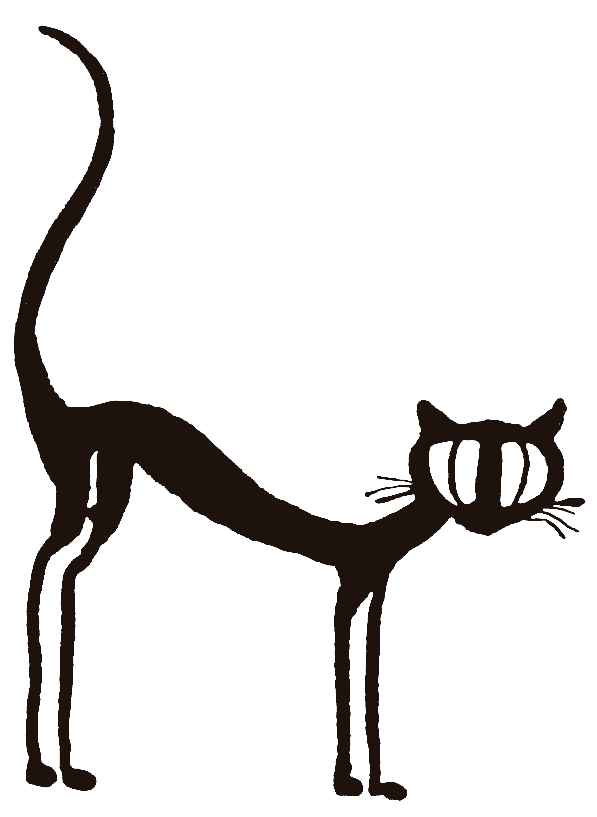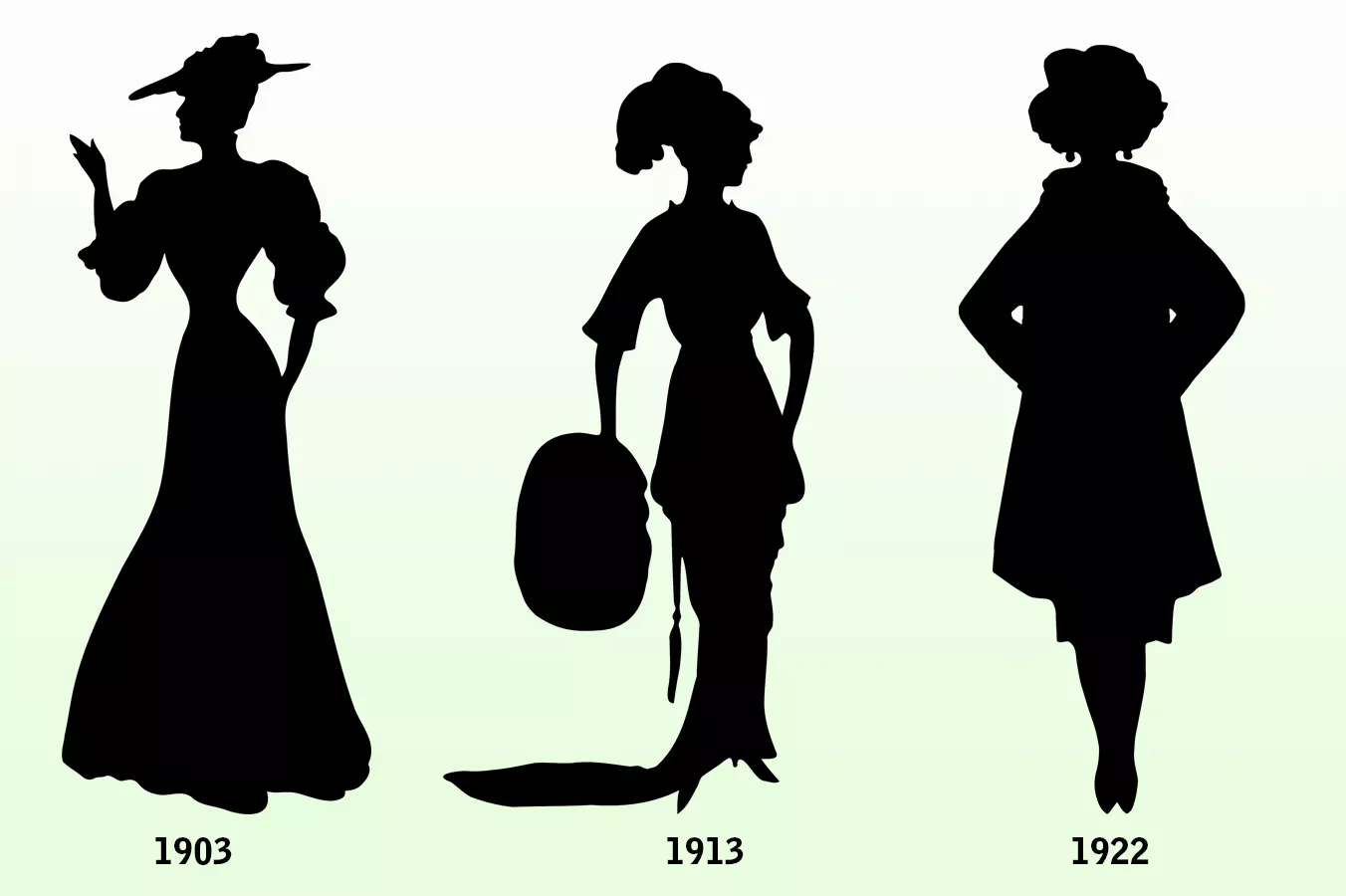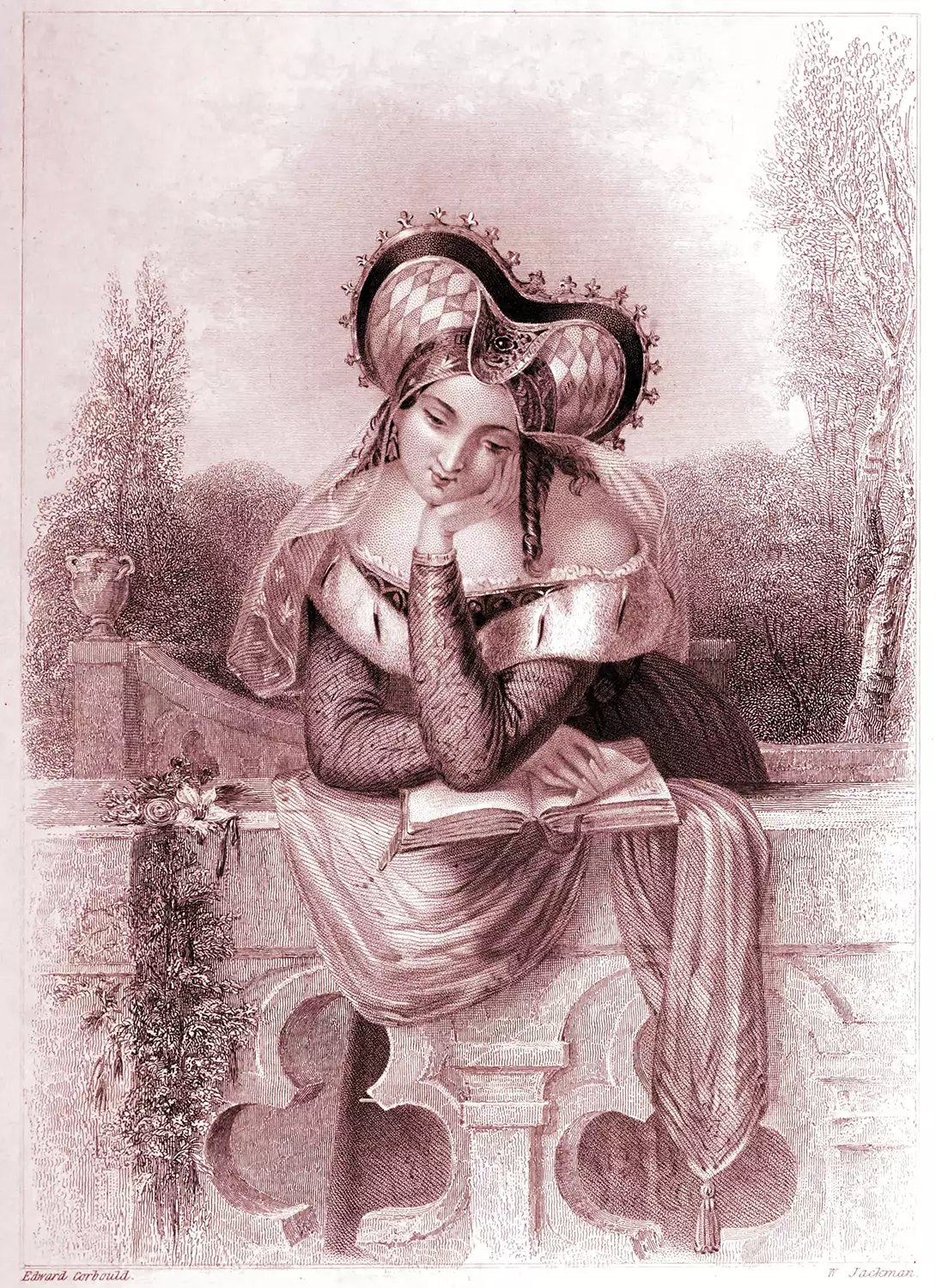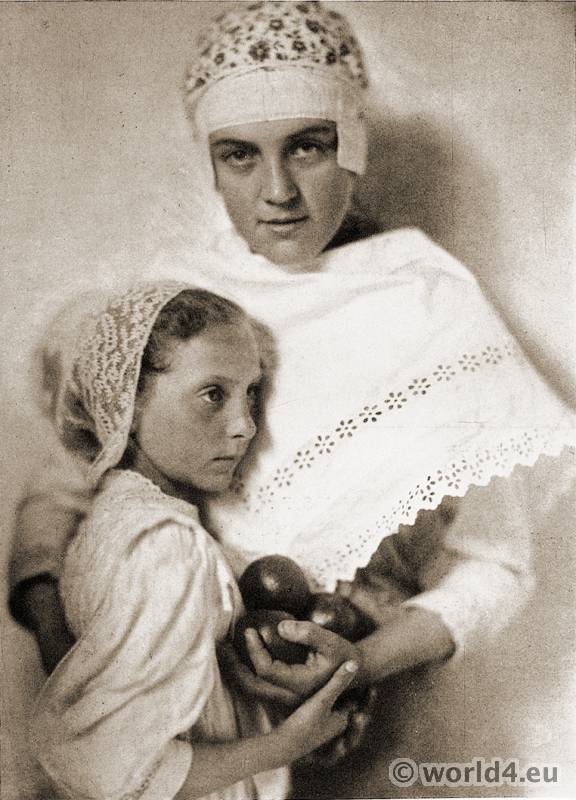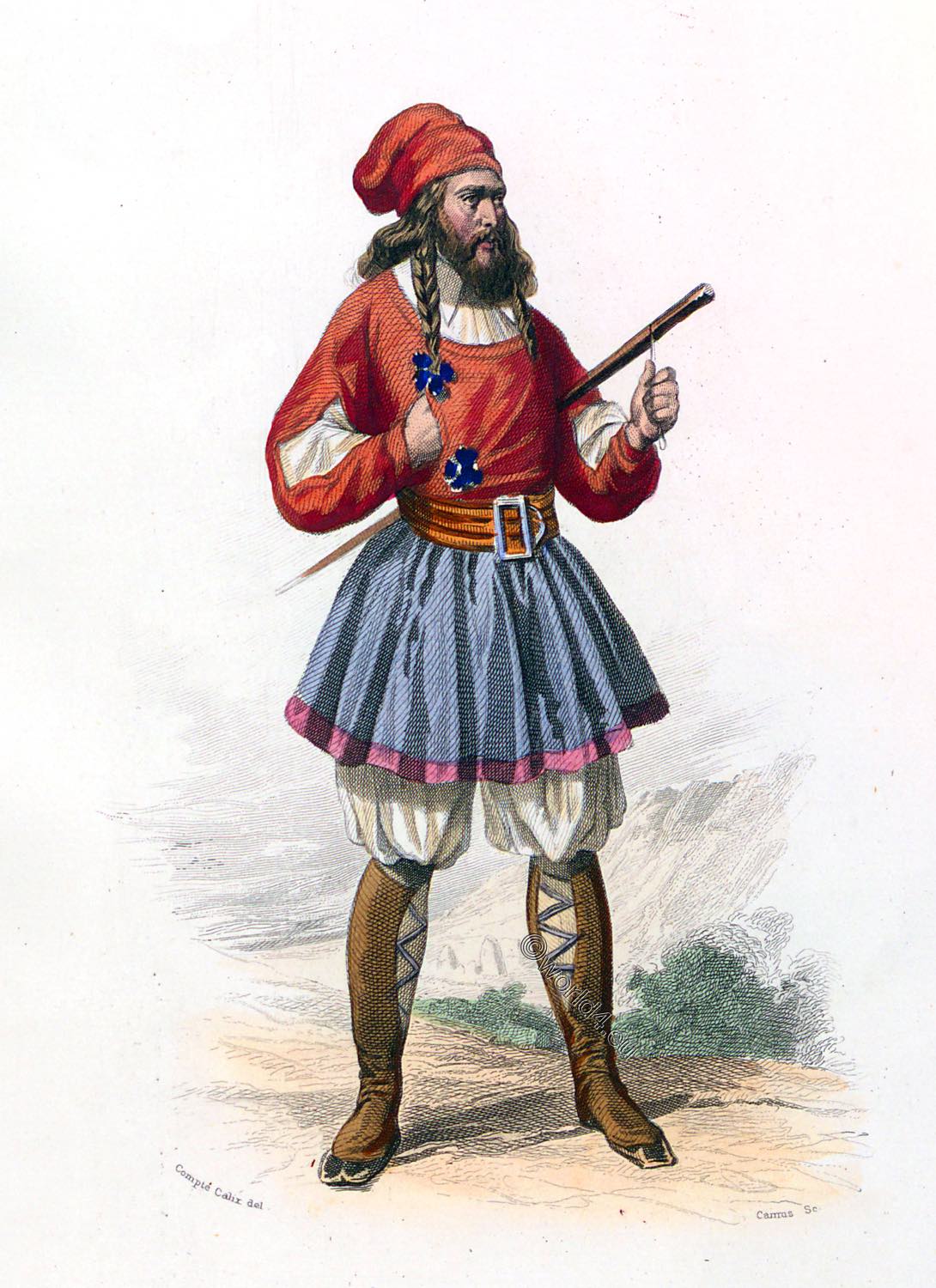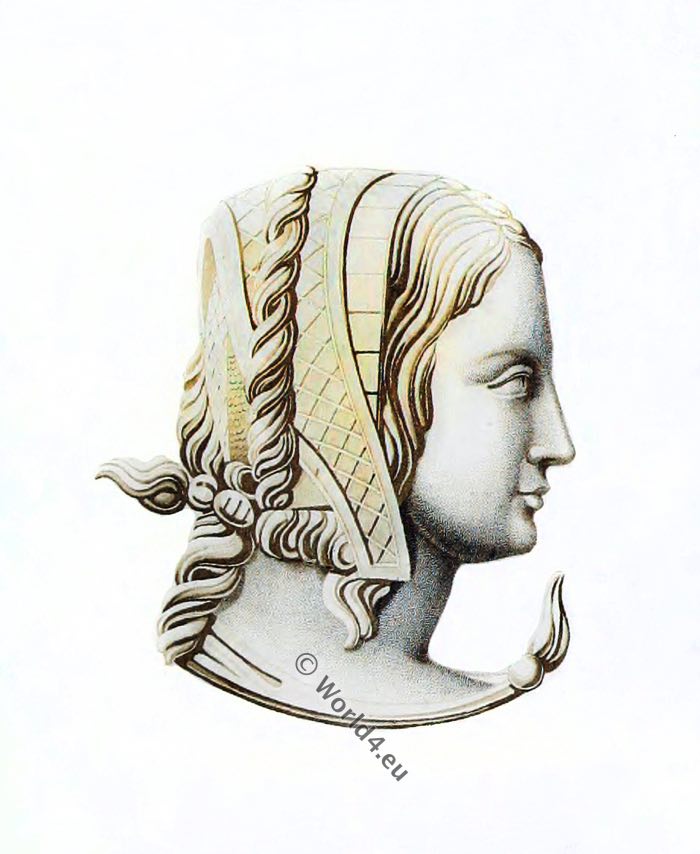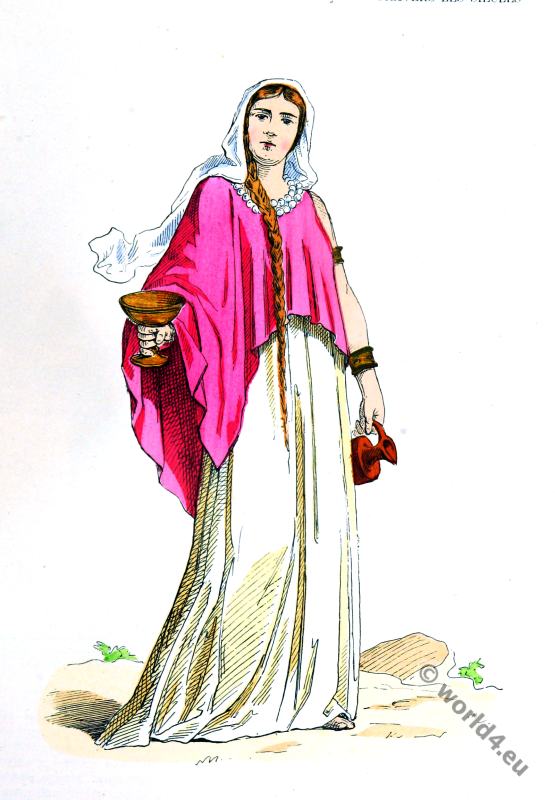TWENTIETH CENTURY SILHOUETTES
AN EXAMINATION of the preceding pages will show to the observer an ever increasing number of silhouettes in each of the succeeding centuries. In the first quarter of the 20th century fashion has already decreed nearly as many changes in the outlines of our costumes as there were in the entire nineteenth century.
In the early part of the 20th century period women fell victims to the very short, small-waisted corset with its accompanying absurdity, the bustle. Together these two contrivances so distorted the natural, graceful contour of woman’s body that today we look with considerable chagrin at the fashions of 1902. Then the full, trailing, bell skirts, smooth and glove-fitting at the hips, and the broad shoulders of the high-collared bodices threw into sharp relief the extreme smallness of the waistline with its rather sharp point in front. The sleeves were fairly tight with frequently puffs at the wrist, while the hat, short and close-fitting in the back, and somewhat shovel-shaped in front, perched upon a high pompadour, tried to balance the broad, sweeping hemline of the skirt.
Within ten years’ time the silhouette had changed to that given by a skirt narrow at the feet, frequently draped and of uneven hem line, or with a tunic which reached to just above the knee; a loosely fitting kimono blouse with a V neck line; a waistline of more generous size and a trifle shorter than the one characteristic of the silhouette of 1902.
It is a difficult task to select any hat as typical of the years 1912 and 1913 as the photographs and fashion magazines of those years show an infinite variety of sizes and shapes ranging from the small turban with its upstanding feather, quill, aigrette or bow, to the large picture hat with its ruche of tulle or drooping feather. The muff, on the contrary, which was carried to complete the winter costume, was of a definite size and shape, large, and rather flat.
These pillow-like muffs call to mind those carried by the gentlemen of fashion of the court of Louis XIV (1643-1715).
By 1916 the leaders of fashion had grown tired of long, straight lines and instituted the bouffant silhouette. Then gradually the skirt became shorter and narrower. In 1920 the costume consisting of a straight, short skirt, trim box coat or sweater and blouse, struggled for supremacy with the simple chemise dress which hung from the shoulders in the manner of the dresses of the early Middle Ages. The penchant for simplicity extended to the hats which, in general, were small, worn well down over the forehead, and mostly void of any but the very simplest trimming.
With abbreviated skirts the foot-wear naturally received considerable attention. Low-cut, flat-heeled shoes, the natural accompaniments of a costume permitting perfect freedom of motion, were worn in all seasons with silk or woollen hose as the weather and occasion necessitated.
Due to the increase in skill and enterprise of the manufacturers of fabrics of all kinds, one is amazed at the infinite variety and beauty of the materials which have been used in the garments of the present century. Each season has brought forth its own new array of weaves and colours so that every woman has been able to make her choice from such staples as serge, tweed, broadcloth, velour, velvet, satin, silk crepe, both transparent and opaque, swiss, organdie, voile, gingham, heavy or sheer linens. or from the innumerable novelty weaves which have crowded each other on the shelves of our shops at the opening of each season.
In 1923, we are in a state of transition with all tendencies pointing toward elongation of the general lines of our costumes. Paris decrees long skirts, long waist lines, and long sleeves; even the crowns of the hats are increasing in height, while many women who revelled in the happy freedom of short tresses the last year or two are beginning to comb the hair back from the face.
One is led to wonder how long, after the novelty has worn away, the women of America will submit to the restrictions of such styles as the present ones, haying known and enjoyed as they did the comfort, simplicity, and freedom afforded by the short, trim, sensible, and attractive costume which resulted from the activities of women during the 1st World War.
It is to be hoped that the universal teaching in our schools today of dress design, economics, and hygiene will result in more intelligent, thoughtful, and artistic dressing in the immediate future than we have seen in many of the past ages. Never before in the long history of costume has there been the opportunity for as great independence in the designing and selection of one’s clothes. Although we are necessarily somewhat restricted by the offerings of our merchants, the handicap is in reality a small one, for the wares of all the world are brought to our doors for us to choose from; the range of prices is normally sufficiently varied to suit the convenience of all; the merchant is more than anxious to fill our wants; the crafts and art of present day and ancient peoples are accessible to us for ideas and inspiration; and most important of all, intelligent public opinion inclines now, as perhaps never before, toward the simple, appropriate, and beautiful in dress for each and every one.
“Right dress is therefore that which is fit for the station in life, and the work to be done in it; and which is otherwise graceful — becoming — lasting—and easy; on occasion, splendid; always as beautiful as possible . . . . Obeying fashion is a great folly, and a greater crime but gradual changes in dress properly accompany a healthful, national development.”
—Ruskin, “Arrows of the Chase: A Collection of Scattered Letters”
Source: Costume silhouettes by Mary Evans. Philadelphia, J.B. Lippincott Company 1923.
